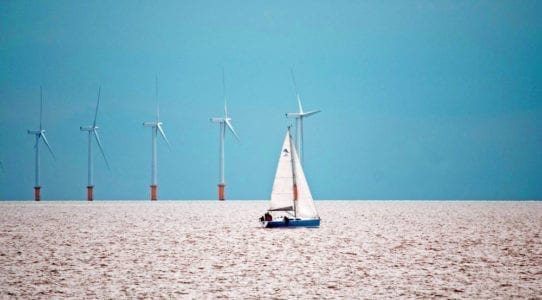Closing the green finance gap—A systems perspective
Meeting its climate policy objectives requires the UK to rapidly decarbonise its energy sector. This demands high levels of investments into low carbon energy infrastructure, which are currently not undertaken at required scale, leading to a green finance gap. In a new journal paper, CUSP researchers Sarah Hafner, Aled Jones and colleagues explore a theoretical framework for investigation of and possible solutions to key investment barriers, drawing on a review of academic literature and policy reports, and interviews conducted with financial investors and experts.

Summary
The science of climate change (IPCC, 2014) continues to show an urgent need for action to reduce global greenhouse gas emissions. One of the most commonly cited barriers to transitioning to a zero carbon economy is the investment requirements. That is, meeting climate policy objectives in line with the Paris agreement requires countries to decarbonise their energy sectors rapidly. This demands high levels of investments into low carbon energy infrastructure, which are currently not undertaken at required scale and speed, leading to a green finance gap (Jones, 2015; Hafner et al., 2019).
In light of this background, a new paper has been published in Environmental Innovation and Societal Transitions (EIST), which asks the following three research questions:
- What are the key barriers towards more green investments into renewable energy infrastructure from the perspective of (financial) investors?
- What theoretical framework conceptualises the green finance gap and would contribute to the elaboration of policy recommendations to close it?
- What are possible policy interventions to scale-up investments into renewable energy infrastructure at sufficient scale and pace?
Thereby, the search for possible policy interventions is undertaken from a high-level perspective and the study focuses on the UK and comparable country contexts. The applied methodology of the article includes a review of key policy reports published in Hafner et al. (2019), a systematic review of academic literature and interviews with (financial) investors, advisors and experts in this research area.
The study demonstrates that the identified key green investment barriers form a complex system which is characterised by path-dependency, non-linearity and feedback loops. The interlinked green investment barriers are related to different sectors, including but not limited to, the following: the electricity market, the political system or the institutional structure. Drawing on this finding, the study argues for the adoption of a systems perspective as theoretical framework for the evaluation of the green finance gap and the elaboration of policies to tackle the challenge. A systems approach helps in particular to identify key leverage-points for an effective policy introduction and the consideration of adverse side-effects and co-benefits across different policies areas and multiple actors.
In the background of the urgency to accelerate investments into low-carbon energy infrastructure, the paper further suggests the implementation of a near-term solution while preparing an effective and systematic long-term intervention based on a systems perspective. The undertaken investigation in this paper shows that policy uncertainty and short-termism in the financial system are the two most important green investment barriers. For this reason, the study proposes the development or expansion of sustainable financing mechanisms (e.g. green bonds) as near-term policy response, while however underlying that that this response will not in itself be sufficient to tackle the green finance gap.
Link
The journal article is currently available in open access format on the Science Direct website. If you have difficulties accessing the paper, please get in touch: info@cusp.ac.uk.
Citation
Hafner S, Jones A, Anger-Kraavi A and Jan Pohl 2020. Closing the green finance gap—A systems perspective. Environmental Innovation and Societal Transitions, 34, 26-60.






